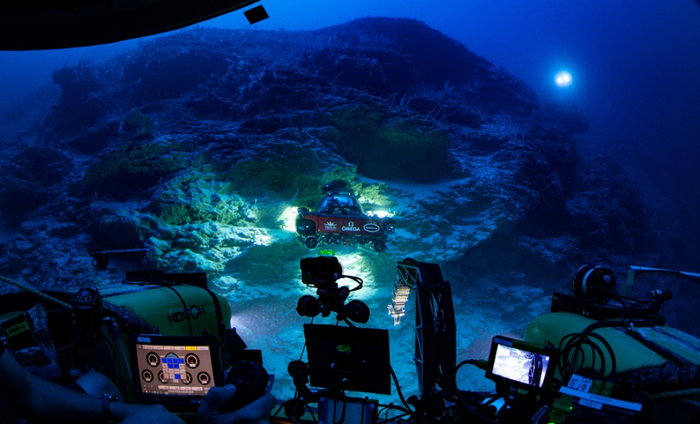A unique world found thousands of feet below the Maldive Sea, this place is full of hungry sharks

In the Indian Ocean, divers have discovered a very unique ecosystem in the ocean at 1,640 feet above the surface. Its special thing is that this place is full of very dangerous and hungry shark fishes.
Scientists have named this area ‘trapping zone’. It is near the deep sea volcano Satho Raha of Maldives. Sathollaraha is an ancient extinct volcano that suddenly rose 4921 feet above sea level during its formation. This place can be called the life-giving place of the ocean desert or the Oasis of life, where swarms of fish and sharks appear aggressive on small sea creatures.
These small organisms are called micronekton. They are classified as being 0.8 to 7.8 inches long, from krill to large fish-like creatures. Micronectons swim freely in the ocean. At dawn they sink to the depths of the ocean.” while they swim on the ocean surface at night to hunt for plankton.
But in the trapping zone, steep cliffs, fossil rocks and volcanic rocks directly beneath the ocean’s surface prevent Micronecton from going deeper than 1,640 feet. This place is very challenging for Micronecton, as they starve behind them.” You have to save your life from sharks.
The trapping zone has all the hallmarks of a different ecosystem,” says Alex Rogers, a marine ecologist at Oxford University. It is creating a new place of life in the Maldives. Such sites are likely to exist on the slopes of other oceanic islands and continents as well.
This new ecosystem was discovered as part of The Nekton Maldives Mission. This mission is sending submarines to 20 natural atolls of the Maldives, about 3,300 feet below sea level, to survey and document these undiscovered areas.
In addition to micronectons, fish found here include predatory tuna, large deep-water fish such as spiky oreos, alphonsinos, and sharks. When the lights of the Omega Seamaster II Submarine struck a swarm of fish, divers saw tiger sharks, sixgill sharks, sand tiger sharks, dog fish, gulper sharks, scalloped hammerhead sharks, silky sharks and the rarely seen bramble shark was. The scientists captured footage of sea creatures, collected their biological samples, and carried out sonar tomography scans of the area under water.
New 'oasis of life' filled with ravenous sharks is found hiding beneath Maldives ocean https://t.co/SBKhTQURMy
— Live Science (@LiveScience) October 25, 2022
Scientists believe that by studying this new region in detail, they can learn more about how it developed its peculiar ecosystem. Also, it may be possible to find out how to better manage micronectons.” To be protected, because their food- plankton is threatened by climate change.
Micronectons are very important to Maldives. Here fishing is the second largest industry with tourism. According to the US Geological Survey, if global warming continues like this, about 80% of the Maldives will be uninhabited by 2050.







